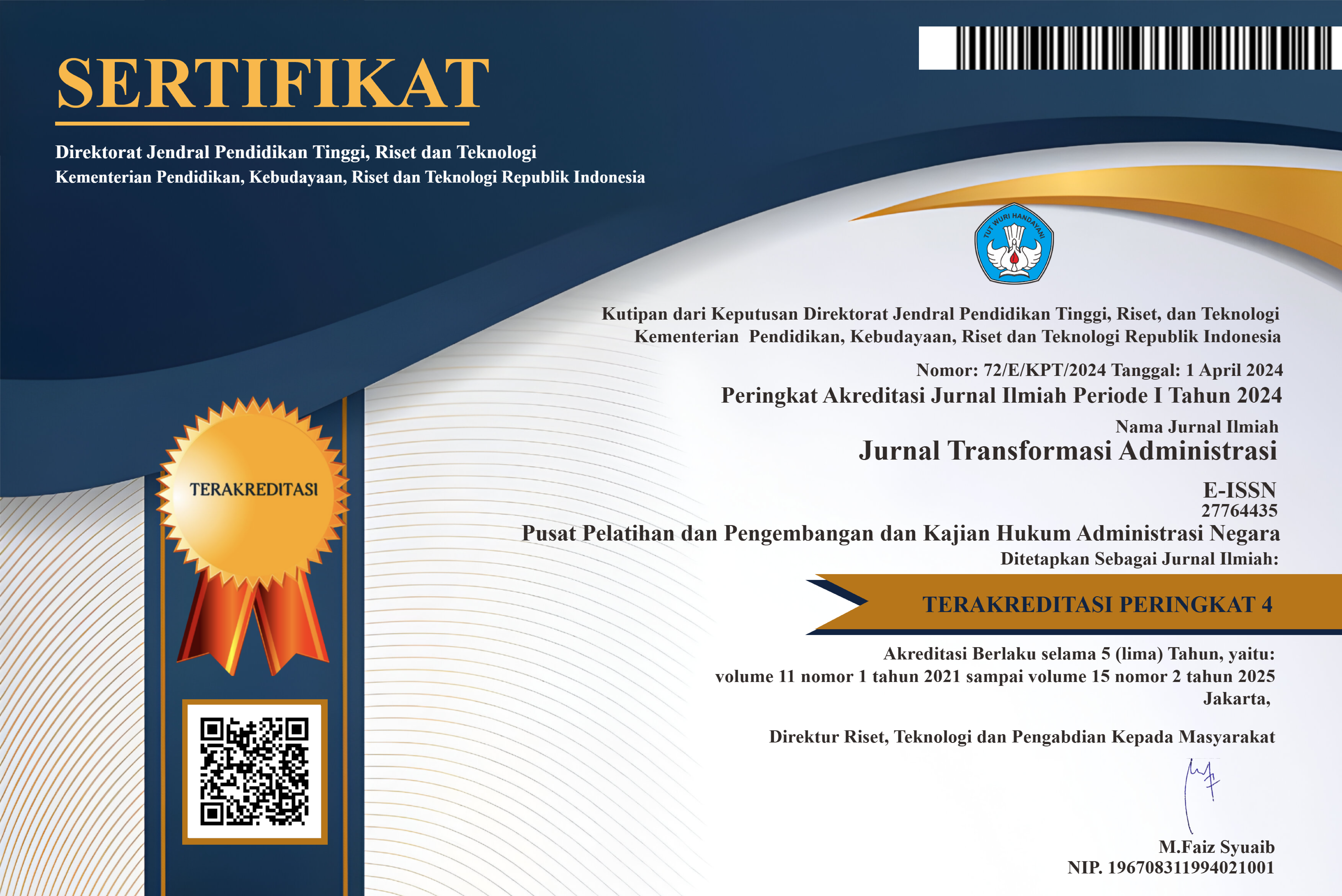Collaborative Governance Strategy In Government Sector
Keywords:
collaborative governance, government, stakeholdersAbstract
At this time, the government must have an active role in carrying out tasks, both duties within the institution and duties to serve public. To balance this task, the government must involve stakeholders. Collaborative Governance exists as a new concept so that there is continuity between public institutions (government and related stakeholders). This to assist the government in carrying out its duties. But now, often the governance of cooperation is not right, so that collaboration is not able to achieve goals. The purpose of this study is to find the right strategy for collaborative governance. The right strategy is expected to help the government to overcome problems in collaborative governance. This research uses a qualitative approach with library research strategy. This research explains that there are various kinds of processes in collaborative governance that can be used in solving existing problems. Through collaborative governance, it is expected that there will be a common perception by public institutions and stakeholders in identifying a problem so that it can be solved together. The results of this study found that the existence of a collaborative strategy in government is not seen from the results, but the existence of a model that is not only based on the process alone or the results. The model that was found in this research is expected to be the right solution in finding a collaborative governance solution for a government.
References
Ansell, Christopher. (2014). Pragmatist Democracy: Evolutionary Learning as Public Philosophy. New York: Oxford University Press.
Donahue, J. (2004). On Collaborative Governance. In Handbook of Public Olicy. Coorporate Social Responsibility Initiative (Vols. 1–2, pp. 1–8).
Dwiyanto, Agus. (2011). Manajemen Pelayanan Publik: Peduli, Inklusif, dan Kolaboratif. Yogyakarta: Gadjah Mada University Pres.
Emerson, K., Nabatchi, T., & Balogh, S. (2011). Integrative framework for collaborative governance. Journal of Administration Research and Theory, 22(1), 1–29.
Freeman, J. (1997). Collaborative Governance in the Administrative State. UCLA Law Review, 45(1).
Goldsmith, S., & Donald, K. (2009). Unlocking The power of network: Key to hight performance goverment. Washington DC: Brooking Institution press.
Haryono, N. (2012). Jejaring untuk membangun kolaborasi sektor publik. Jurnal Jejaring Administrasi Publik, IV(1).
Kumorotomo, Wahyudi. (2013). Transformasi Pelayanan Jakarta Commuter Line : Studi Tentag Collaborative Governance di Sektor Publik. Jurusan Manajemen dan Kebijakan Publik, FISIPOL UGM.
Kurniasih, D., Israwan, P., & Imron, M. (2017). Collaborative Governance dalam penguatan kelembagaan program Saitasi Lingkungan Berbasis Masyarakat (SLBM) di Kabupaten Banyumas. Jurnal Sosiohumaniora, 19(1).
Ratner. (2012). Collaborative Governance Assessment. Malaysia: CGIAR.
Sudarmo. (2011). Isu-Isu Administrasi Publik dalam Perspektif Governance. Solo: Smart Media.
Seigler, D. (2011). Renewing democracy by enganging citizen in shared governance. Public Administration Review, 968–970.
Sufianti, E. (2014). Kepemimpinan dan Perencanaan Kolaboratif pada Masyarakat Non Kolaboratif. Jurnal Perencanaan Wilayah Kota, 25(1).
http://komnasperempuan.go.id/















